by Paul White
I receive a lot of questions about the Roma community here (also known as Romani) regarding their rich and vibrant culture, including customs, dress, music and art. However, I must declare from the beginning of this article that I'm neither an expert in their culture and history. What I document is either from personal knowledge and experience or what the Roma have told me themselves.
From a personal perspective and with no criticism intended, whilst I find Roma people very interesting, they can also be aloof and incredibly hard to connect with. Of the many people I know in Transylvania, most are Székely and Romanians, but only two are Roma.
They tend to stick to their own and even when on friendly terms, you don't feel like you're getting to know them. Maybe this fascination is related to their elusiveness, who knows. That said it's easy to forget that the Roma have been persecuted throughout history which may explain their reluctance to integrate with other societies.
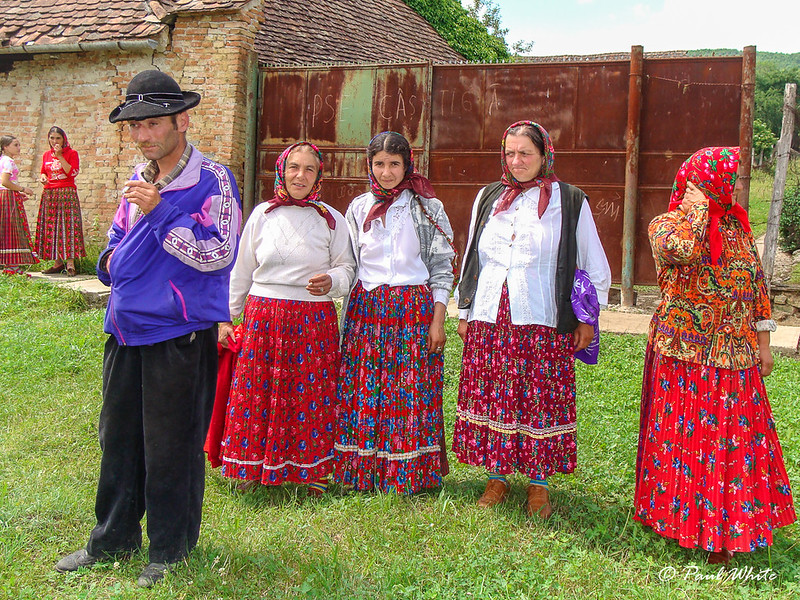
Most Roma in Transylvania speak Romanian but many that live in Szekler areas speak Hungarian too. There are also a minority that speak their traditional ancestral Romany which is an Indo-Aryan language with several differing dialects throughout Europe. They make up approximately 2% of the population, but their numbers are estimated to increase rapidly due to a higher than average birth rate.
Many live in abject poverty with high levels of unemployment, often with little to no education. Whilst this is true, it would be false to say that this often held stereotype is true of all Roma. Just as in any other society there are the rich, poor and middle class.
The rich have a unique style of displaying their wealth, building extravagant homes which often look more like palaces. Wealth also attracts wealth and these large and flamboyant houses can often be seen in clusters along main roads. This example below is a photograph I took when entering the city of Arad.

There are also a minority of Roma that are returning to their ancestral nomadic tradition, but this is often due to poor economic standing and certainly cannot be compared with a truly nomadic lifestyle. There's nothing romantic about this way of life and horse and cart are used as a cheap form of combined accommodation and transport. They can be seen slowly moving from one county to another in search of seasonal farm work, assisting with planting and harvesting crops. Living conditions are basic and cramped and once the fair weather is over they return to their static homes for winter.

Various policies of the former communist dictator Nicolae Ceauşescu changed the way Roma lived. The true roaming Roma were forced to stop travelling and made to live in fixed locations attached to Romanian, Saxon and Szekely villages and towns. This was all part of the then governments control of the population, which was easier to maintain when citizens are static in one location where they could be watched and monitored.
Although the Roma have as much freedom as anyone else living in Romania today, many remain in their Ceauşescu designated locations, most probably due to financial restraints, but also due to the loss of traditional skills and knowledge they had when living a truly nomadic life. Today many Roma men are choosing to work for higher wages in other parts of the European Union, bringing their income home every few weeks to support their often large families.
Now for some photos taken on trips around Romania, starting with a funeral wake I came across when driving through the old Saxon village of Schonberg. I stopped and walked over to a large gathering intending to take a couple of photos, but was immediately invited into the courtyard to take part in this very lively event. They were incredibly hospitable and seemed genuinely happy that an outsider showed interest in their culture. Apparently, most tourists stop in the village to visit the fortified church and learn about local Saxon German history. All but a handful of Saxons left Romania after the fall of communism in 1989.


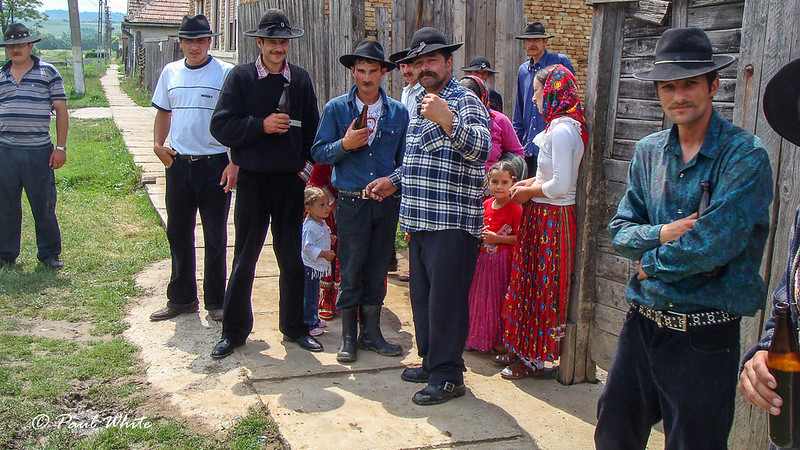


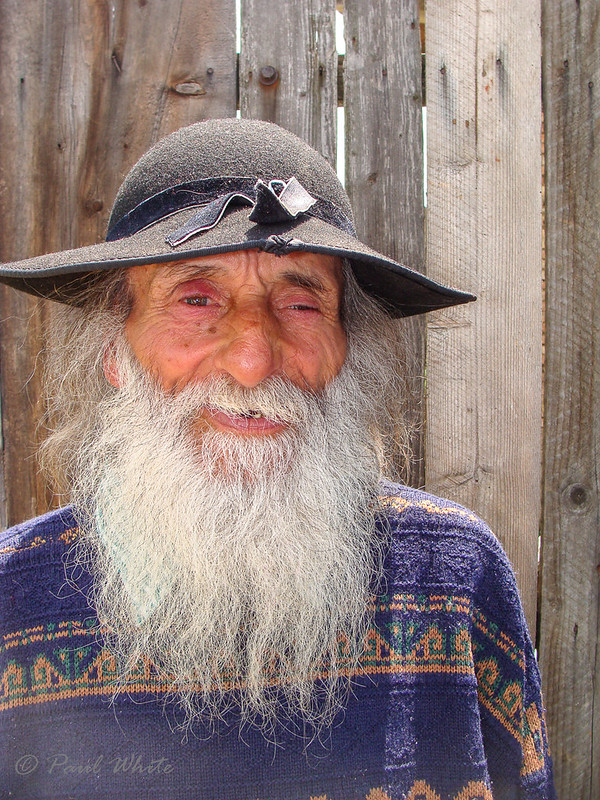
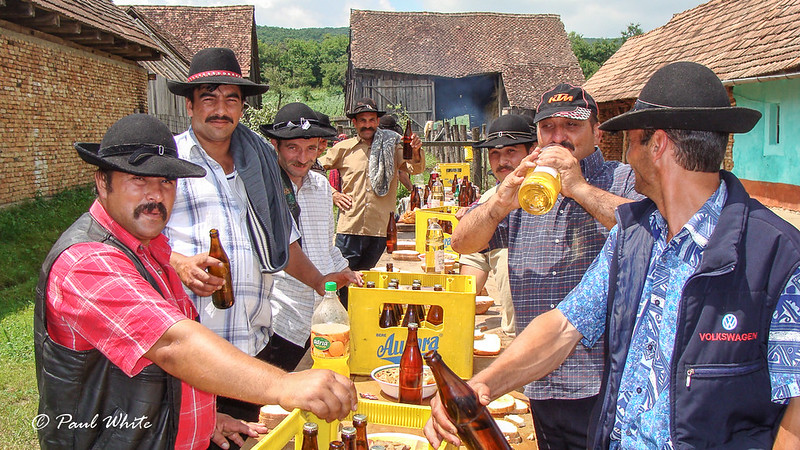
On another trip, this time to Cluj Napoca I came across these two Roma homes that had recently been constructed. The ancestral roots of the Roma originate in India and I believe you can see the cultural influence in their architecture, especially the roofs.

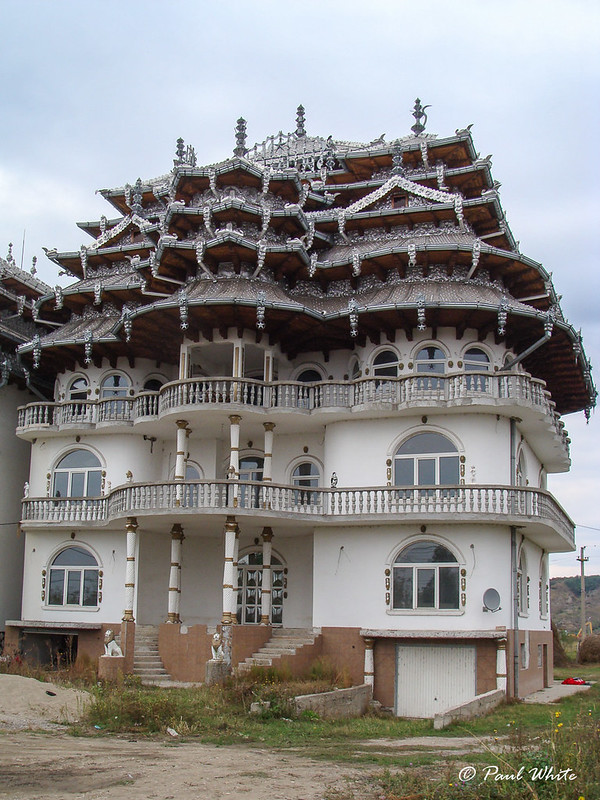
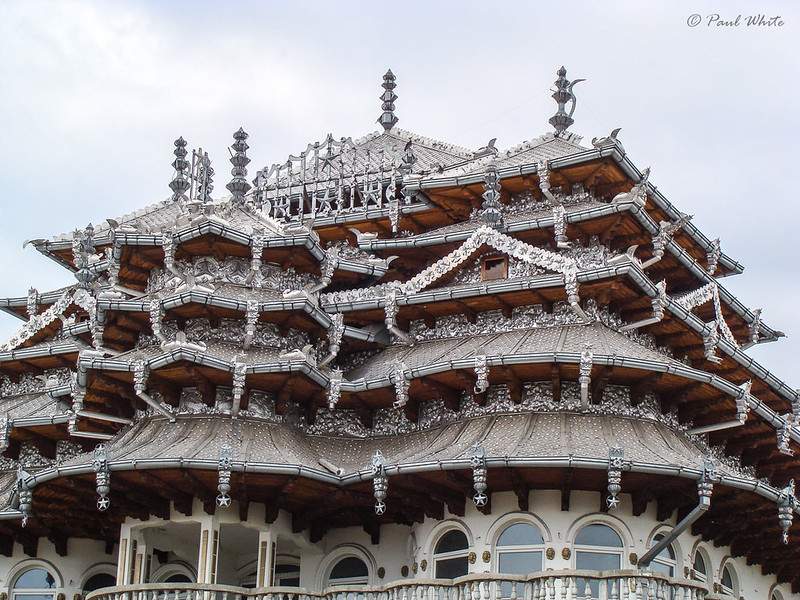

I receive a lot of questions about the Roma community here (also known as Romani) regarding their rich and vibrant culture, including customs, dress, music and art. However, I must declare from the beginning of this article that I'm neither an expert in their culture and history. What I document is either from personal knowledge and experience or what the Roma have told me themselves.
From a personal perspective and with no criticism intended, whilst I find Roma people very interesting, they can also be aloof and incredibly hard to connect with. Of the many people I know in Transylvania, most are Székely and Romanians, but only two are Roma.
They tend to stick to their own and even when on friendly terms, you don't feel like you're getting to know them. Maybe this fascination is related to their elusiveness, who knows. That said it's easy to forget that the Roma have been persecuted throughout history which may explain their reluctance to integrate with other societies.

Most Roma in Transylvania speak Romanian but many that live in Szekler areas speak Hungarian too. There are also a minority that speak their traditional ancestral Romany which is an Indo-Aryan language with several differing dialects throughout Europe. They make up approximately 2% of the population, but their numbers are estimated to increase rapidly due to a higher than average birth rate.
Many live in abject poverty with high levels of unemployment, often with little to no education. Whilst this is true, it would be false to say that this often held stereotype is true of all Roma. Just as in any other society there are the rich, poor and middle class.
The rich have a unique style of displaying their wealth, building extravagant homes which often look more like palaces. Wealth also attracts wealth and these large and flamboyant houses can often be seen in clusters along main roads. This example below is a photograph I took when entering the city of Arad.

There are also a minority of Roma that are returning to their ancestral nomadic tradition, but this is often due to poor economic standing and certainly cannot be compared with a truly nomadic lifestyle. There's nothing romantic about this way of life and horse and cart are used as a cheap form of combined accommodation and transport. They can be seen slowly moving from one county to another in search of seasonal farm work, assisting with planting and harvesting crops. Living conditions are basic and cramped and once the fair weather is over they return to their static homes for winter.

Various policies of the former communist dictator Nicolae Ceauşescu changed the way Roma lived. The true roaming Roma were forced to stop travelling and made to live in fixed locations attached to Romanian, Saxon and Szekely villages and towns. This was all part of the then governments control of the population, which was easier to maintain when citizens are static in one location where they could be watched and monitored.
Although the Roma have as much freedom as anyone else living in Romania today, many remain in their Ceauşescu designated locations, most probably due to financial restraints, but also due to the loss of traditional skills and knowledge they had when living a truly nomadic life. Today many Roma men are choosing to work for higher wages in other parts of the European Union, bringing their income home every few weeks to support their often large families.
Now for some photos taken on trips around Romania, starting with a funeral wake I came across when driving through the old Saxon village of Schonberg. I stopped and walked over to a large gathering intending to take a couple of photos, but was immediately invited into the courtyard to take part in this very lively event. They were incredibly hospitable and seemed genuinely happy that an outsider showed interest in their culture. Apparently, most tourists stop in the village to visit the fortified church and learn about local Saxon German history. All but a handful of Saxons left Romania after the fall of communism in 1989.







On another trip, this time to Cluj Napoca I came across these two Roma homes that had recently been constructed. The ancestral roots of the Roma originate in India and I believe you can see the cultural influence in their architecture, especially the roofs.




Updated September 4th, 2020